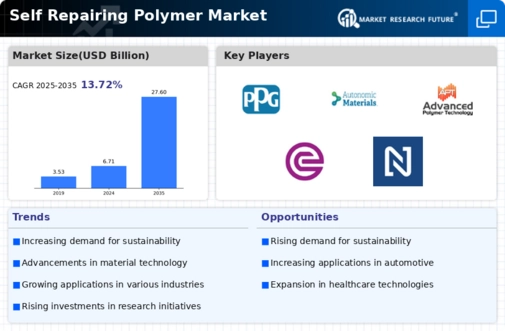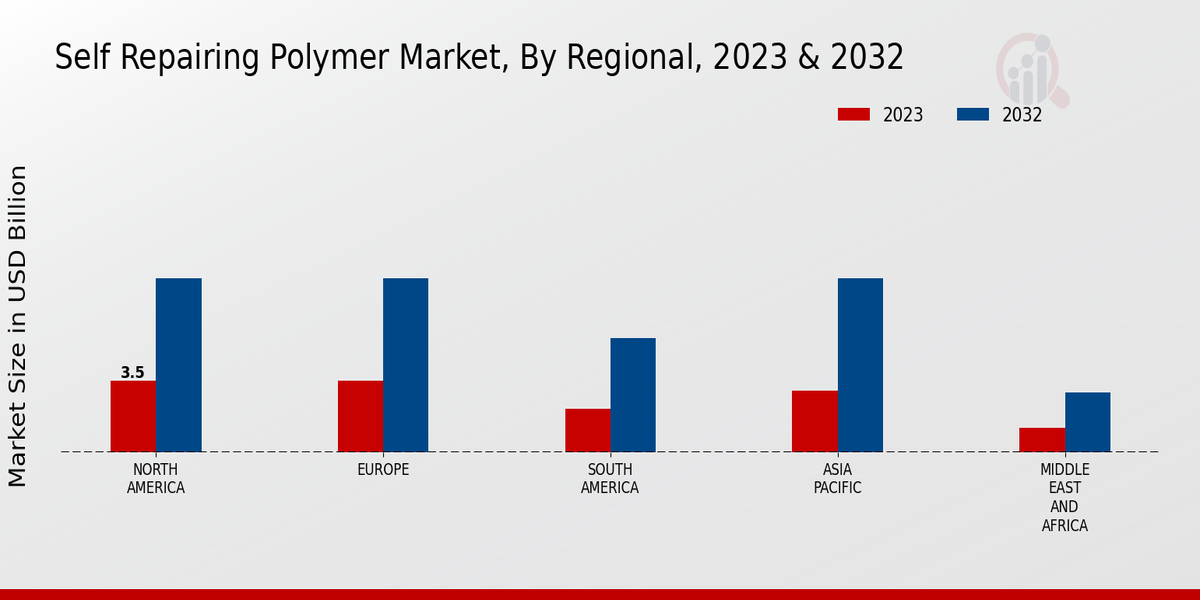Market Growth Charts
Market Growth Projections
The Global Self Repairing Polymer Market Industry is poised for substantial growth, with projections indicating a market size of 6.71 USD Billion in 2024 and an anticipated increase to 27.6 USD Billion by 2035. This growth trajectory suggests a compound annual growth rate (CAGR) of 13.72% from 2025 to 2035. Such figures reflect the rising interest in self-repairing technologies across various industries, driven by the need for durable, sustainable, and efficient materials. The increasing adoption of these polymers in diverse applications is likely to create new opportunities for manufacturers and stakeholders in the market.
Increased Focus on Sustainability
The Global Self Repairing Polymer Market Industry is witnessing an increased focus on sustainability, driven by global environmental concerns. Self-repairing polymers contribute to sustainability by reducing waste and extending the life cycle of products. For instance, in the construction sector, these materials can minimize the need for frequent replacements, thereby lowering resource consumption. Governments and organizations are promoting sustainable practices, which further encourages the adoption of self-repairing technologies. This shift towards eco-friendly solutions is expected to play a crucial role in the market's expansion, with projections indicating a market size of 27.6 USD Billion by 2035.
Growing Applications in Healthcare
The Global Self Repairing Polymer Market Industry is expanding into the healthcare sector, where self-repairing polymers are being utilized for medical devices and implants. These materials can enhance the durability and functionality of devices, reducing the need for replacements and improving patient outcomes. For example, self-healing hydrogels are being developed for wound healing applications, providing a more effective solution for tissue repair. The increasing demand for advanced medical solutions is likely to drive growth in this segment, contributing to the overall market expansion as healthcare providers seek innovative materials that offer enhanced performance and reliability.
Rising Demand for Durable Materials
The Global Self Repairing Polymer Market Industry is experiencing a surge in demand for durable materials across various sectors. Industries such as automotive, aerospace, and construction are increasingly adopting self-repairing polymers due to their ability to enhance product longevity and reduce maintenance costs. For instance, self-repairing coatings are being utilized in automotive applications to minimize the impact of scratches and dents. This trend is projected to contribute significantly to the market's growth, with the industry expected to reach 6.71 USD Billion in 2024, indicating a robust interest in innovative materials that offer both performance and sustainability.
Technological Advancements in Polymer Science
Technological advancements in polymer science are propelling the Global Self Repairing Polymer Market Industry forward. Innovations in material chemistry and engineering are leading to the development of more efficient self-repairing mechanisms, which enhance the performance of these polymers. For example, the integration of microcapsules containing healing agents within the polymer matrix allows for automatic repair upon damage. Such advancements not only improve the functionality of self-repairing polymers but also expand their application range. As a result, the market is anticipated to grow at a CAGR of 13.72% from 2025 to 2035, reflecting the ongoing evolution of polymer technologies.







